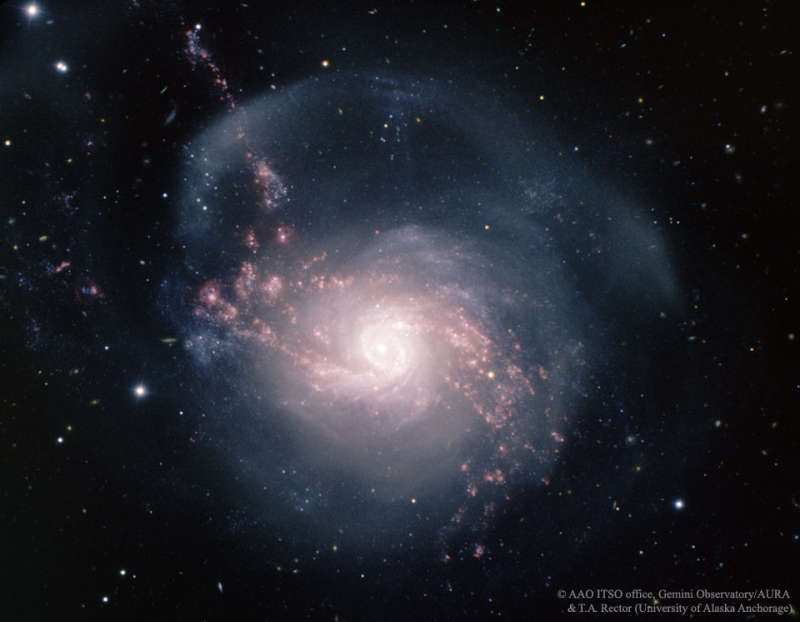NGC 3310: A Starburst Spiral Galaxy

Explanation:
The party is still going on in spiral galaxy NGC 3310.
Roughly 100 million years ago,
NGC 3310 likely
collided with a smaller galaxy
causing the large
spiral galaxy
to light up with a tremendous burst of
star formation.
The changing gravity during the collision created
density waves that compressed existing
clouds of gas and triggered the
star-forming party.
The
featured image from the
Gemini North Telescope shows the galaxy in great detail, color-coded so that
pink highlights gas while white and blue highlight stars.
Some of the star clusters
in the galaxy are quite young, indicating that
starburst galaxies may remain in
star-burst mode for quite some time.
NGC 3310 spans about 50,000
light years, lies about 50 million light years away,
and is visible with a small telescope towards the
constellation of
Ursa Major.
Authors & editors:
Robert Nemiroff
(MTU) &
Jerry Bonnell
(USRA)
NASA Web Site Statements, Warnings,
and Disclaimers
NASA Official: Jay Norris.
Specific
rights apply.
A service of:
LHEA at
NASA /
GSFC
& Michigan Tech. U.

